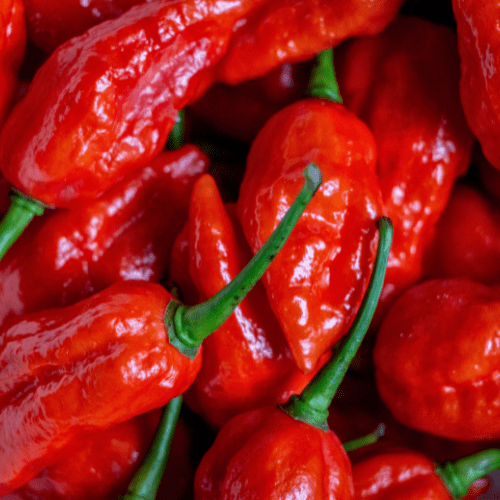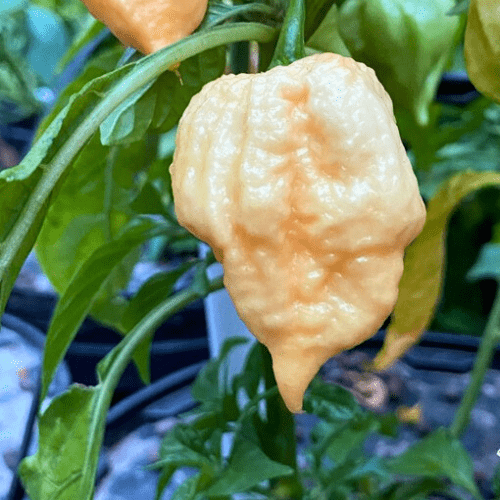Position
Choose a location that receives full sun, at least 6-8 hours of direct sunlight per day. Carolina Reapers love warmth and sunlight. Take them indoors during winter if growing in a cold climate.
Soil
Carolina Reaper chilli plants grow best in loamy, well-draining soil. The soil should be rich in organic matter to ensure healthy plant growth.
Adding half a bag of our Volcanic Rock Dust (R25 per bag) and a bag of Superfrass (R25 per bag) will assist in rapid growth.
Watering
Keep the soil consistently moist but not waterlogged. Water the plants deeply, especially during dry spells.
Watering
Carolina Reapers require consistent watering to keep the soil moist, especially during hot, dry periods. In summer water plants in the Root stimulating pots daily if no rain.
Keep the soil consistently moist but not waterlogged. Water the plants deeply, especially during dry spells.
Mulch
Use from 2 to 5 centimetres of pine bark mulch to protect the roots from UV damage and drying out. It retains moisture and maintains an optimal pH. Do not let the mulch touch the plant stem, as it may cause infection or rot.
Re-apply every 3-4 months.
Pruning
Prune your Carolina Reaper plants regularly to remove dead or damaged leaves and encourage better airflow around the plant. This also helps the plant focus its energy on producing peppers rather than excessive foliage.
As the peppers grow, the plant may need support due to the weight of the peppers. Use stakes, cages, or trellises to help support the plant and prevent it from falling over.
Fertilising
Use a balanced fertiliser (such as 10-10-10) during planting and again every 4-6 weeks throughout the growing season to encourage healthy growth. Once the plant begins to flower, switch to a fertiliser with higher phosphorus and potassium to promote fruiting and pepper development.
Too much nitrogen can lead to excessive foliage growth with little fruit production.
Apply 1 teaspoon every 4-5 months of our slow-release all-plant fertiliser. The roots will absorb what they need.
Pests & Diseases
Carolina Reapers can be susceptible to fungal diseases like powdery mildew, blight, or root rot, particularly if grown in humid conditions. Proper spacing, good airflow, and watering at the base of the plant can help prevent these issues.
Treat promptly or preferably use preventative measures by spraying with agricultural Neem Oil or Effective Microorganisms (EM Control)
Harvesting
Carolina Reaper are ready to harvest when they turn from green to vibrant red.
Use scissors or garden shears to cut the peppers off the plant, leaving a small stem attached. The intense heat of the peppers means that you need to handle them carefully, especially when harvesting, as touching the skin or eyes after handling them can lead to burns or irritation.
By providing the right temperature, soil, and care, you can successfully grow Carolina Reapers and enjoy one of the hottest peppers in the world.






